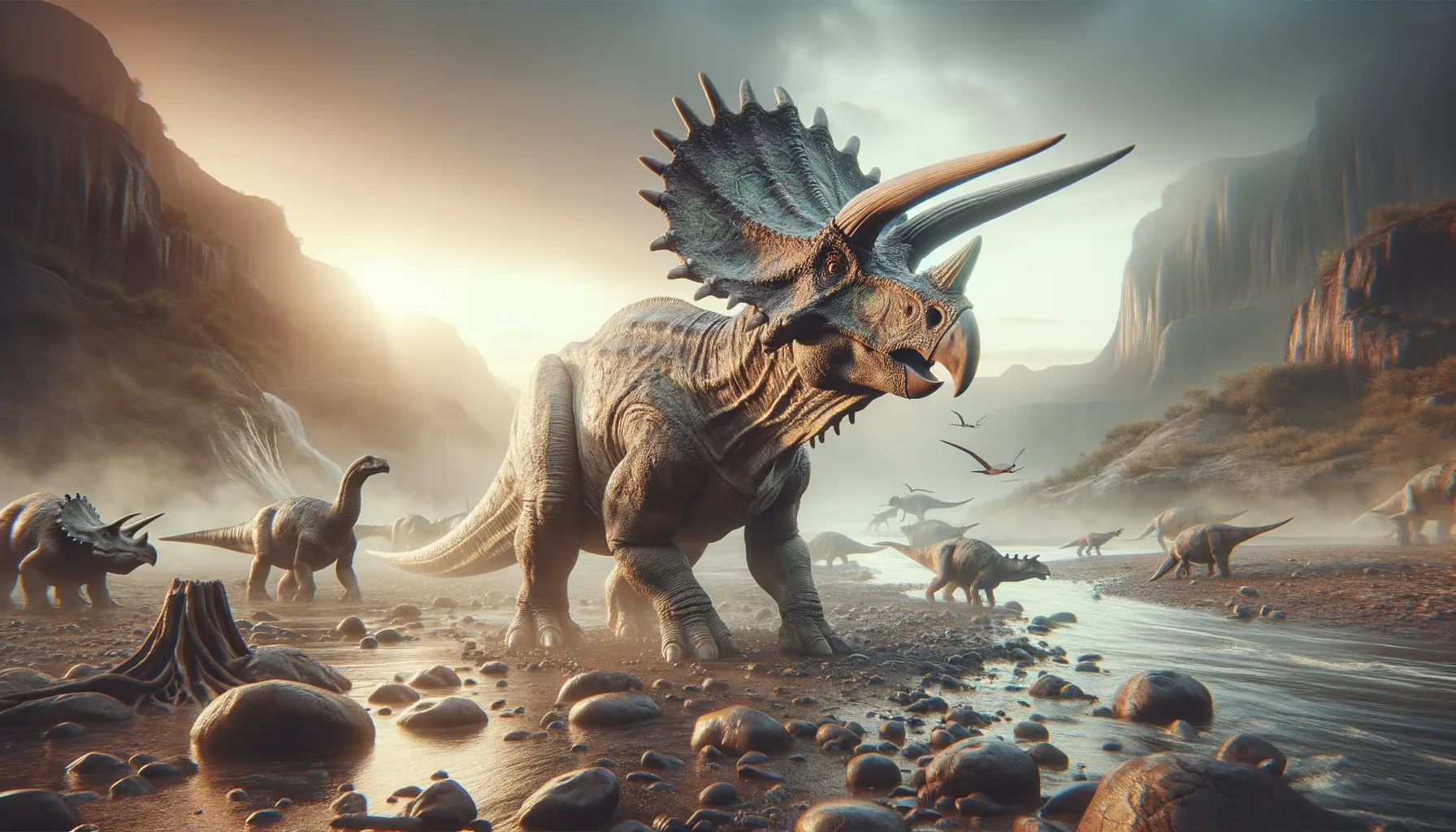
Ojoceratops
Horns that stood the test of time.
Period
Cretaceous
Length
Roughly 20 feet long.
Height
Approximately 6 feet tall at the hips.
Weight
Around 1.5 to 2 tons.
Ojoceratops was a herbivorous dinosaur that belonged to the family of ceratopsians, known for their prominent horns and frills. It roamed what is now North America during the Late Cretaceous period. Given its size and build, Ojoceratops was likely a slow-moving creature that used its horns for defense. Fossils found mainly in New Mexico have provided insight into its physical characteristics and lifestyle.
Diet
Ojoceratops was a herbivore, primarily feeding on plants that grew close to the ground. Its beak-like mouth made it ideal for snapping up ferns and other low-lying vegetation.
Hunting
Being a plant-eater, Ojoceratops did not hunt for food. Instead, it spent much of its time grazing in open areas where vegetation was plentiful.
Environmental challenges
Ojoceratops lived during a time of significant environmental changes, including shifts in climate and periodic volcanic activity. These changes could have impacted the availability of food, requiring them to adapt by changing their migratory patterns. Competition for resources with other herbivores may have also posed a challenge.
Speed
Ojoceratops likely moved at a slow pace.
Lifespan
It might have lived for several decades.
First discovery
Discovered in the early 2000s in North America.
Fun Facts
- Ojoceratops lived during the Late Cretaceous period, around 68 million years ago.
- This dinosaur's name means 'Ojo horned face', named after the Ojo Alamo Formation where its fossils were found.
- Ojoceratops was closely related to the famous Triceratops, sharing similar features like a beak and frilled head.
- It was a herbivore, primarily feeding on plants in its prehistoric environment.
- Ojoceratops had a large, bony frill at the back of its head, possibly used for protection or display.
- Fossils of Ojoceratops have been discovered in what is now New Mexico, USA.
- Despite its impressive horns and frill, Ojoceratops was not very large compared to other ceratopsians, about the size of a rhinoceros.
Growth and Development
Ojoceratops likely hatched from eggs, growing rapidly to escape predators. Juveniles would have needed to stay close to adults for protection. As they grew, the development of their distinctive horns and frills became more pronounced, providing them with defense against predators.
Habitat
Ojoceratops inhabited forested areas with access to abundant plant life for grazing. It favored open savannahs or floodplains where it could find plenty of food. The environment would have been warm and humid, typical of the Late Cretaceous period.
Interaction with other species
Ojoceratops likely lived in herds, providing safety in numbers against predators. It shared its habitat with other herbivorous dinosaurs, competing for food sources. Its presence also attracted large predators, creating a dynamic ecosystem where both prey and predator evolved alongside each other.
Natural lifespan
Ojoceratops had a natural lifespan that could extend to decades.
Reproduction
Ojoceratops reproduced by laying eggs, likely in a nest built from vegetation. Males might have used their horns in displays or combat to attract mates. Parental care was probably limited to guarding nests from predators.
Social behaviour
Ojoceratops may have been a social dinosaur, living in groups to help protect against predators. Group living would have facilitated the sharing of information about food sources and threats. Herd dynamics might have included complex social interactions, with dominant individuals leading or defending the group.
Fossil locations
Fossils of Ojoceratops have been predominantly found in the San Juan Basin, New Mexico. These discoveries have been instrumental in understanding the diversity of ceratopsians in North America. The fossils suggest it lived in regions rich in sedimentary deposits, which preserved its remains over millions of years.
